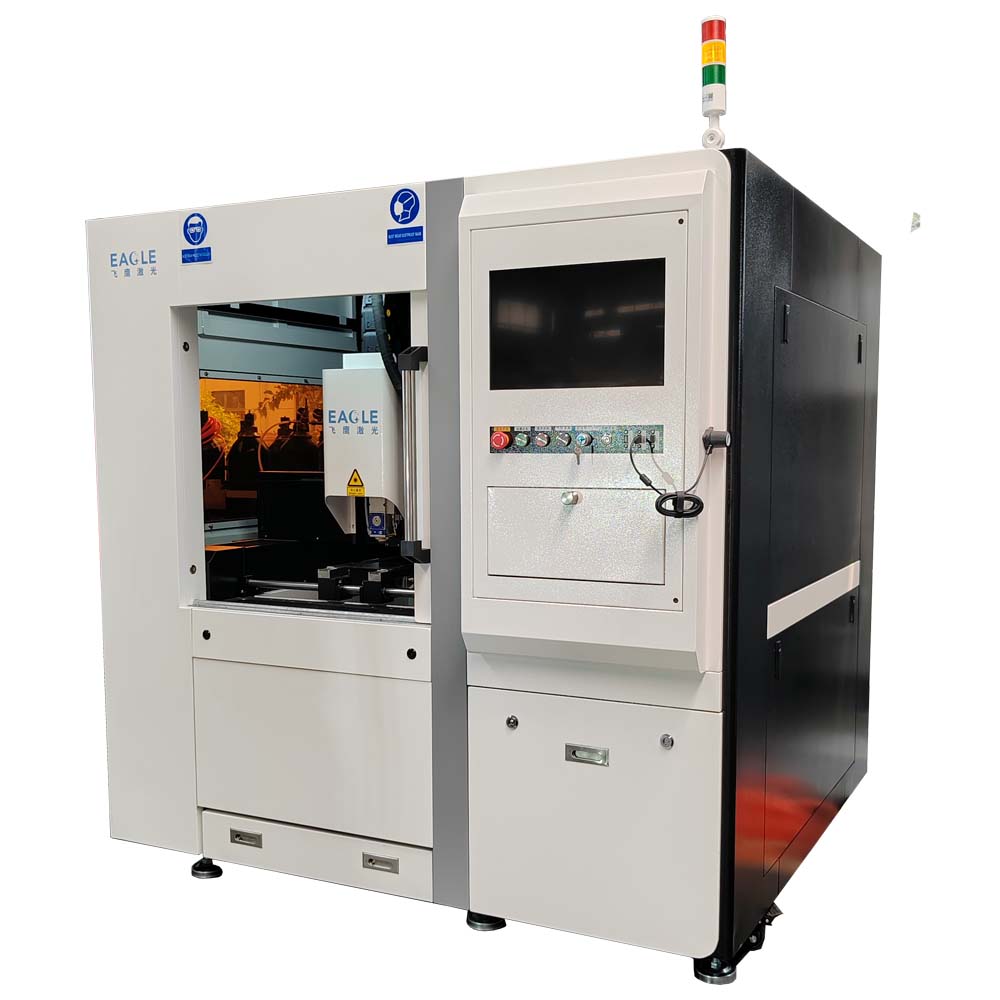Laser cutting technology is widely used in industrial manufacturing due to its accuracy and efficiency. However, all thermal cutting technologies (except for very few cases) generally have to first pierce a small hole in the board being cut before continuing to cut. This article summarizes the two main piercing methods used in fiber laser precision cutting machine: blast piercing and pulse piercing.

1. Blasting perforation:
Blasting perforation involves continuous laser irradiation of the material surface, forming a depression in the center. At the same time, a coaxial oxygen stream quickly discharges the molten material to form a perforation. The size of the perforation is usually related to the material thickness - on average half the thickness of the plate. Due to its large and irregular hole diameter, blasting perforation is not suitable for precision parts and is usually applied to scrap materials. In addition, using the same pressure of oxygen as cutting will produce a lot of spatter.
Advantages:
Quick perforation process.
Suitable for thick materials.
Disadvantages:
Irregular and large perforation diameter.
Excessive spatter, reducing accuracy.
2. Pulsed perforation:
Pulsed perforation uses a high peak power pulsed laser to melt or vaporize a small amount of material. Air or nitrogen is usually used as an auxiliary gas to minimize heat-induced oxidation that can expand the perforation. This method requires lower gas pressure than cutting operations. Each laser pulse ejects tiny particles, gradually deepening the perforation. Although thick materials are more time-consuming, pulse perforation can produce smaller and more precise holes.
After completion, the auxiliary gas is switched to oxygen to continue cutting. Pulsed perforation requires a laser with high output power and excellent beam quality. Crossflow CO2 lasers do not usually meet these requirements. In addition, a reliable gas control system is necessary to switch gases, regulate pressure, and manage perforation duration.
Advantages:
Smaller, more precise perforations.
Higher quality than sandblasting perforations.
Disadvantages:
Longer processing time, especially for thick materials.
Advanced gas control system required.
Transition from perforation to cutting.
For high-quality and high-volume cutting, a smooth transition from pulsed perforation to continuous cutting is critical. In theory, modifying cutting parameters such as focal length, nozzle position, and gas pressure during the acceleration phase can improve results. However, these adjustments are not practical due to the short transition time. In industrial applications, adjusting the average power of the laser by changing the pulse width and frequency is the primary method for optimizing this transition.
Choosing the right perforation method is critical to achieving the best laser cutting results. Sandblasting perforation is ideal for faster operations on thicker materials where accuracy is less important, while pulsed perforation provides superior accuracy for high-precision applications. The purpose of updating this article is to let manufacturers understand the advantages and limitations of each method of fiber laser precision cutting machine, so that they can better use fiber laser precision cutting machine to improve product quality and production efficiency.
Finally, please choose the product you want to buy according to your needs for fiber laser precision cutting machine at work. If you want to know more about fiber laser precision cutting machine, you can contact us by sending an email, and we will choose the right machine for you according to your requirements. You are welcome to consult us at any time.

